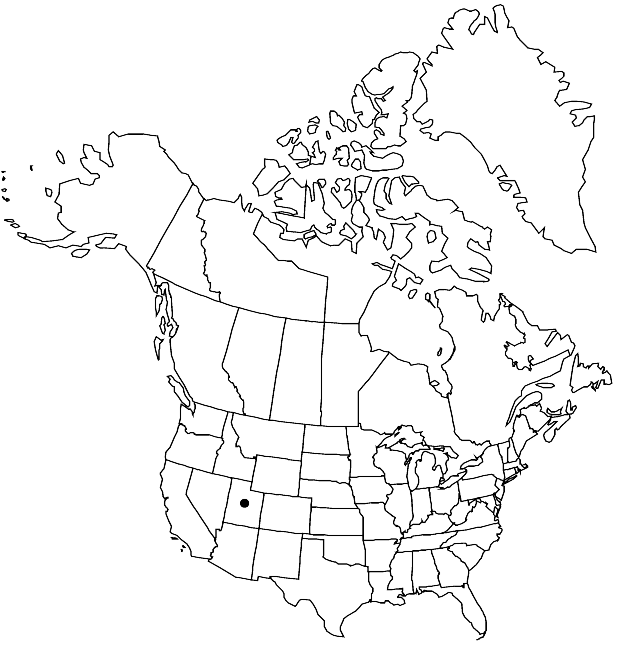Boechera lasiocarpa
Brittonia 55: 3. 2003.
Perennials; long-lived; sexual; caudex often woody. Stems 1 or few per caudex branch, arising from center or margin of rosette, somewhat elevated on woody base or near ground surface, (0.7–)2–3.5 dm, densely pubescent proximally, trichomes short-stalked, 4–8-rayed, 0.05–0.15 mm, moderately to sparsely pubescent distally. Basal leaves: blade narrowly oblanceolate, 2–5 mm wide, margins entire, not ciliate, surfaces densely pubescent, trichomes short-stalked, 4–8-rayed, 0.05–0.15 mm. Cauline leaves: 4–10, often concealing stem proximally; blade auricles absent, surfaces of distalmost leaves sparsely to moderately pubescent. Racemes 5–12-flowered, usually unbranched. Fruiting pedicels descending, recurved, 4–14 mm, pubescent, trichomes appressed, branched. Flowers divaricate at anthesis; sepals pubescent; petals purple to lavender, 6–10 × 1.5–2.5 mm, glabrous; pollen ellipsoid. Fruits pendent, usually not appressed to rachis, rarely secund, straight or curved, 2–5 cm × 1.7–2.2 mm; valves glabrous or pubescent throughout; ovules 26–36 per ovary; style 0.2–0.9 mm. Seeds uniseriate, 1.5–2 × 1–1.5 mm; wing distal or continuous, 0.1–0.2 mm wide.
Phenology: Flowering May–Jun.
Habitat: Rocky ridges and slopes with dwarf sagebrush
Elevation: 1800-2800 m
Discussion
Boechera lasiocarpa is a sexual species that appears to be restricted to the Bear River Mountains and northern Wasatch Range in north-central Utah. Reports of Arabis (Boechera) lasiocarpa from central Idaho (e.g., R. C. Rollins 1993; N. H. Holmgren 2005b) represent B. rollinsiorum (see M. D. Windham and I. A. Al-Shehbaz 2006 for detailed comparison).
Selected References
None.

